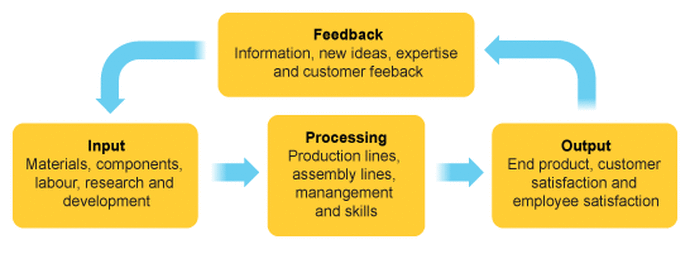
Younguns, take a look at the grand, wide picture right above this line. What is it that you see?
Yes, I know you know what it is because of the page title indicated, but I also know you probably don't know how to interpret it. The thing about this graph is that it makes the whole process of planning, manufacturing, and selling so easy to see, so easy to understand. Entrepreneurs use this graph, a basic step for you young future-entrepreneurs to step up in your glorious business lives. This is very functional in knowing your destination in making a product. The IPO (Input-Process-Output) is very crucial.
Input
Input. I just repeated the word in the subheading. Anyways, the input-process-output endures 3 main stages. The input, the first part, as you can already infer, is the part of planning. It is everything behind the scenes. Remember that! Behind the scenes. This means of the planning, the set up, research, and all those development stuff. Just remember the keyword I said before, alright? Behind the scenes.
Process
Process. I just did it again. Process is where you DO. Fathomable, right? You're already getting the picture of the whole idea of this graph. Business is easy. It is - if you really just don't think about anything else but this graph and this graph alone, and you just simply underestimate everything like one of those mediocre villains everywhere in kiddie cartoons. In the process you assemble, put in, bake, production, and management. As the entrepreneur, though, of course, you're the very high-stature white-collar worker that doesn't really DO, but plan and manage of course. If you think it that way, you don't actually look like you're DO-ing anything, so DON'T think like that. DO think that you DO, because you actually DO, because without planning, execution would only be a word.
Output
Output. Last time. Output lies in the end, the end, the very end, if your company's so top-notch. But of course that's never gonna happen - I mean the output becoming the end. The end, though, isn't the actual end, as I say, because the output is only the end of the main phases of the IPO. The output is prominently only the end product being launched, the sales, publicity, and satisfaction. No testimony, yet.
Feedback
This is the last, very last part I didn't mention, because I was mentioning about the main 3 parts of the IPO. Speaking of the name, the IPO should actually be the IPO-F if, you want to be a real wiseguy. You can brag to your friends about how you actually found out the real acronym of this graph. Anyways, as all of the mentioned phases are, the Feedback is obviously the review. The testimonials, new conceptions, revisions, and... feedback. You get it now. I know you do. You're smart, you are.
If you're really a man of not-words-but-graphical-stuff, look at an example of an IPO diagram, an agricultural one:
Made by Erwin S.






 RSS Feed
RSS Feed